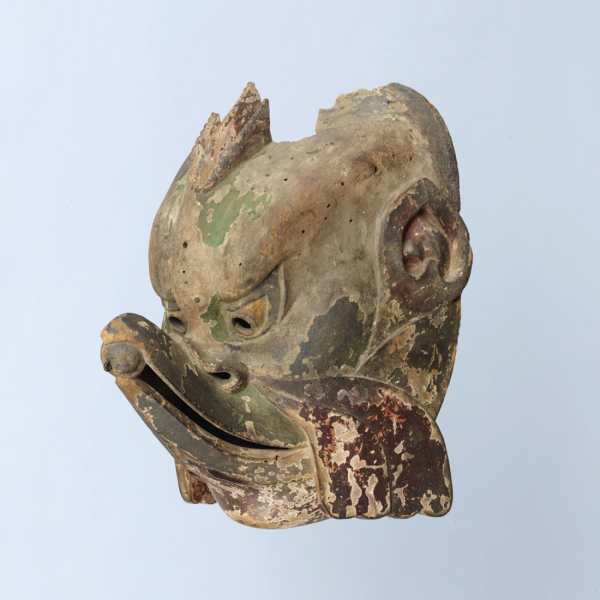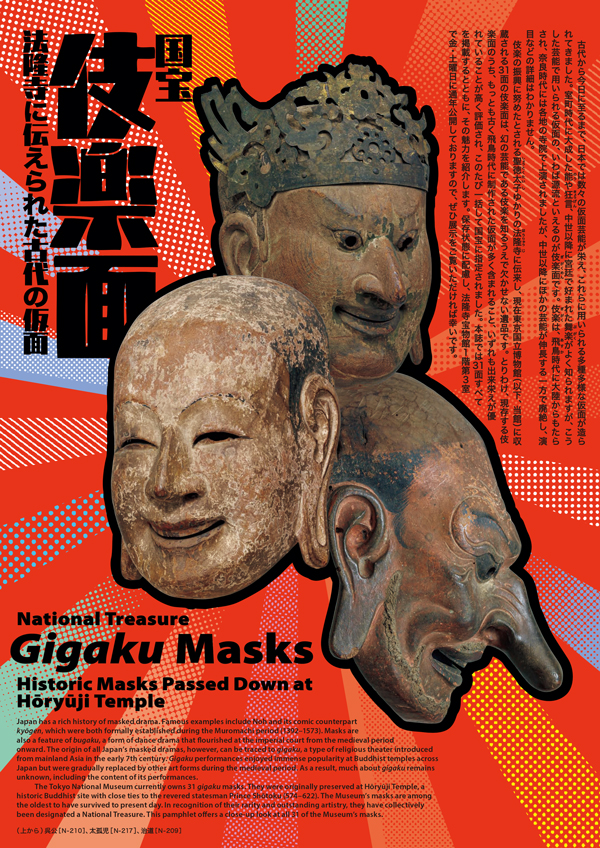The Gallery of Horyuji Treasures Room 3
April 22, 2025 (Tue) - April 19, 2026 (Sun)
Japan has a rich history of masked drama. Famous examples include Noh and its comic counterpart kyōgen, which were both formally established during the Muromachi period (1392–1573). Masks are also a feature of bugaku, a form of dance drama that flourished at the imperial court from the medieval period onward. The origin of all Japan’s masked dramas, however, can be traced to gigaku, a type of religious theater introduced from mainland Asia in the early 7th century. Gigaku performances enjoyed immense popularity at Buddhist temples across Japan but were gradually replaced by other art forms during the medieval period. As a result, much about gigaku remains unknown, including the content of its performances.
The Tokyo National Museum currently owns 31 gigaku masks. They were originally preserved at Hōryūji Temple, a historic Buddhist site with close ties to the revered statesman Prince Shōtoku (574–622). The Museum’s masks are among the oldest to have survived to present day. In recognition of their rarity and outstanding artistry, they have collectively been designated a National Treasure.


